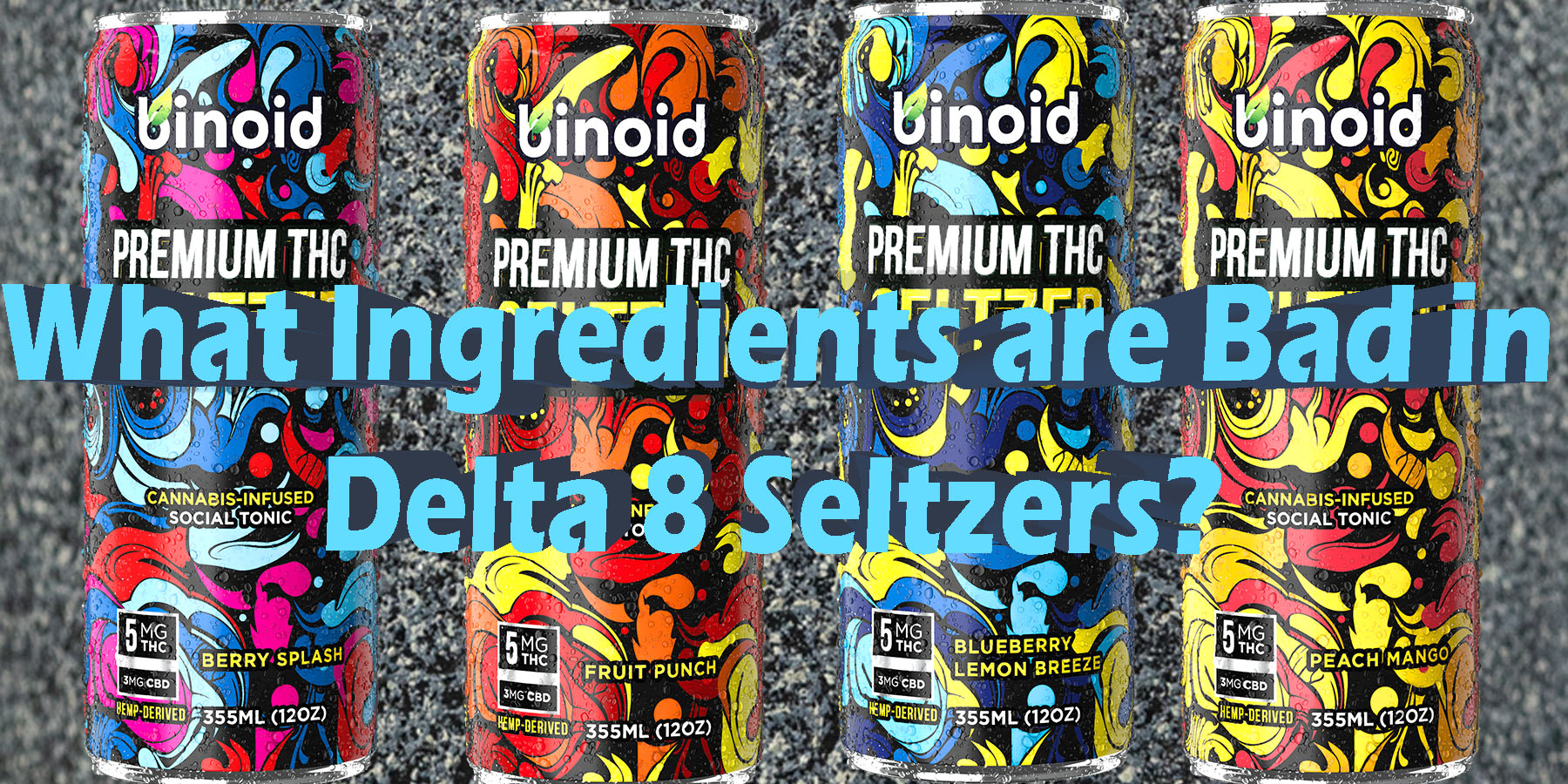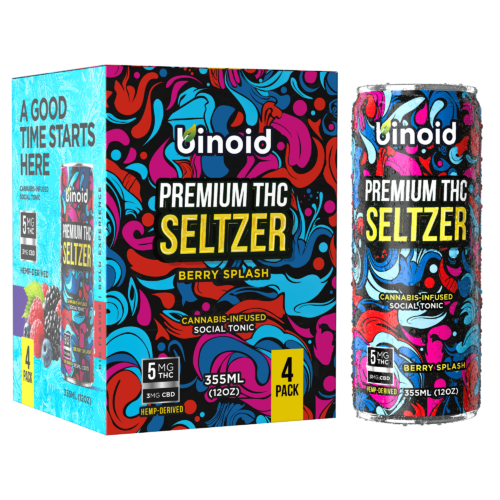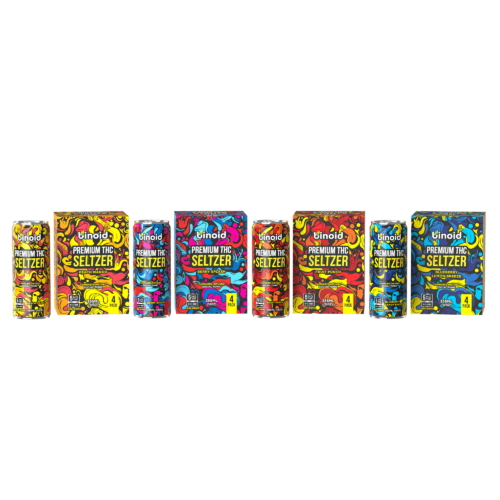The allure of a Delta 8 THC seltzer is immediate—a sleek can that promises a clean, functional buzz without the baggage of sugar or alcohol. It feels like a modern magic trick, offering a portal to a more relaxed and creative state of mind. But beyond the vibrant marketing and minimalist design, every can contains a hidden message that tells the true story of its creation. This message, the ingredient list, is a transparent confession of a brand’s entire philosophy.
It reveals whether they have meticulously sourced quality components to deliver a premium experience, or if they have simply used a cocktail of artificial additives to hide a flawed foundation. In the unique world of Delta 8, where a bitter, impure distillate can be the unfortunate result of a rushed chemical process, learning to decode this list is the consumer’s most powerful skill, transforming you from a hopeful buyer into an informed connoisseur.
To Buy Delta 8 THC Seltzers Click Here
Recommended products
What are Delta 8 THC Seltzers?
To properly evaluate the building materials of a Delta 8 THC seltzer, we must first understand the product’s fundamental design and purpose. At its foundation, a Delta 8 seltzer is a carbonated water beverage infused with a precise, pre-measured dose of Delta 8 Tetrahydrocannabinol. Delta 8 THC, derived from legally grown hemp, is a close chemical relative to the more famous Delta 9 THC but is prized for its ability to produce a milder, more clear-headed, and less anxious psychoactive experience.
These drinks are often defined by the materials they don’t use; premium versions are celebrated for being free from sugar, gluten, and significant calories. Their entire identity is tied to the concept of a “clean” and simple structure, offering a transparent alternative to both sugary alcoholic drinks and more complex cannabis products. This minimalist design is the core reason for their explosive popularity among discerning, health-aware consumers who are seeking the uplifting effects of Delta 8 in a pure and refreshing format.
The construction of a high-quality Delta 8 THC seltzer is a marvel of modern food science, with a primary goal of maintaining the purity of its core components. The process starts with a solid foundation: water that has been purified through advanced filtration methods like reverse osmosis, ensuring it is a completely clean and neutral base. This water is then carbonated with beverage-grade CO2 to create its signature effervescence.
The most critical engineering feat is the infusion of the Delta 8 THC. Because cannabinoids are oils, a sophisticated technology called nano-emulsion is required to make them water-soluble. This process uses high-grade, purified Delta 8 distillate—which is colorless and tasteless—and shatters it into microscopic particles that can be suspended seamlessly in the water. This ensures the final structure is stable and consistent, without requiring artificial binders or stabilizers to hold it together.
The effects of a well-made Delta 8 seltzer are often described as being as “clean” as its list of ingredients. Because these beverages are typically free from sugar, caffeine, or other additives that can cloud the experience, the user can appreciate the effects of the Delta 8 in a very direct and unadulterated way. The feeling is frequently characterized as a functional, clear-headed buzz, a gentle boost in mood and creativity that avoids the heavy or sluggish sensations sometimes associated with other cannabis products. The rapid onset of effects from the nano-emulsified Delta 8, often felt in as little as 15-20 minutes, further enhances this feeling of control and clarity, allowing users to precisely gauge their experience as it unfolds.
The primary audience for Delta 8 seltzers consists of individuals who are, by nature, meticulous about the “building materials” in the products they consume. This includes a wide range of wellness-minded adults who actively look for clean labels as part of a more holistic and health-conscious lifestyle. It also captures the rapidly growing “sober curious” community, who are seeking satisfying alternatives to alcoholic beverages that are free from the associated sugar, calories, and unpleasant after-effects. The appeal to this demographic is not just the uniquely functional bliss the seltzer can provide, but the confidence that comes from consuming a product whose blueprint is simple, pure, and transparent from the ground up.
A List of Ingredients to Not Go Near for Delta 8 THC Seltzers
The structural beauty of an ideal Delta 8 seltzers lies in its minimalist design. A great product is built with only the necessary, high-quality materials required to deliver a clean and refreshing experience. However, as the category’s popularity has soared, the market has been flooded with a vast array of products, many of which do not adhere to this premium blueprint. In an effort to cut construction costs or, more importantly, to mask the unpleasant taste of a low-quality and impure Delta 8 distillate, some brands will use a host of undesirable additives.
The challenge with Delta 8, unlike other cannabis products, is that the base extract itself can be harsh if not properly made. The chemical process to create Delta 8 can leave behind a bitter, chemical-like taste. When a brand uses an excessive amount of artificial sweeteners or flavors, it is often not just a matter of taste preference; it can be a deliberate attempt to put up a cheap façade to hide a flawed foundation. Becoming a skilled inspector of the ingredient label is your most effective tool for identifying this shoddy workmanship. It allows you to see past the flashy marketing and choose a product that is built with integrity.
This section is your guide to identifying these inferior building materials. It will empower you to ensure that the seltzer you choose is not only enjoyable but structurally sound, crafted with quality and transparency. The following chart details some of the common ingredients that should make you question the integrity of a Delta 8 seltzer‘s construction.
Recommended products
|
Ingredient to Avoid |
Why You Might Steer Clear of It |
How it Can Detract from the Seltzer Experience |
|---|---|---|
|
Artificial Sweeteners (e.g., Aspartame, Sucralose, Acesulfame Potassium) |
These are synthetic, zero-calorie sugar substitutes. Many health-conscious consumers choose to avoid them due to ongoing questions about their long-term health effects. More specific to Delta 8, their presence in high amounts can be a major red flag that the company is using them as a heavy-handed tool to mask the bitter, chemical-like taste of an impure, poorly-remediated distillate. |
A well-made seltzer should be refreshing and clean. These artificial sweeteners can leave a distinctly unpleasant, lingering chemical aftertaste that overpowers any natural flavors. This cloying sweetness serves as a poor cover-up for a flawed foundation, resulting in a beverage that tastes cheap and unnatural, a far cry from a premium experience. |
|
Artificial Colors (e.g., Red 40, Yellow 5, Blue 1) |
These are petroleum-derived dyes used only to give a beverage a cosmetic, often unnaturally vibrant, color. They offer no flavor or nutritional value and are seen by many as an unnecessary additive in a wellness-focused product. |
The appeal of a seltzer is its purity and clarity, often compared to sparkling water. The addition of bright, synthetic colors makes the product look more like a sugary, low-grade soda. This cheapens the aesthetic and signals that the brand is prioritizing a flashy appearance over a clean, minimalist, and high-quality product structure. |
|
Chemical Preservatives (e.g., Sodium Benzoate, Potassium Sorbate) |
These chemicals are added to products to inhibit the growth of mold and bacteria, thereby increasing shelf life. However, they are generally considered unnecessary in a modern, properly canned beverage that has undergone pasteurization. For some, their presence contradicts the idea of a “natural” product. |
While often tasteless, the knowledge that you are consuming chemical preservatives can detract from the experience of enjoying a clean wellness beverage. Their inclusion can suggest a less-than-premium manufacturing process and adds a synthetic component to a drink that should be celebrated for its simplicity and purity. |
|
Artificial Flavors |
This is a catch-all term for proprietary chemical concoctions created in a lab to mimic natural tastes. A single “artificial flavor” can be made up of hundreds of individual synthetic compounds. Their use, especially when they are the dominant flavor, can be a sign that a brand is not confident in the natural taste of their product or is trying to mask off-flavors from their base ingredients. |
Artificial flavors tend to have a very one-dimensional, overpowering, and “candy-like” character that lacks the complexity of real fruit. In a Delta 8 seltzer, this can make the beverage taste cheap and cloying, a stark contrast to the sophisticated and authentic taste that high-quality natural extracts provide. |
|
Propylene Glycol (PG) |
This is a synthetic liquid sometimes used as a carrier for flavors or to improve mouthfeel in beverages. While the FDA has approved it as safe for consumption, its association with industrial applications (like antifreeze) makes many wellness-focused consumers uncomfortable with its inclusion in a product they ingest. |
The presence of an ingredient like PG can create a psychological barrier to enjoying what should feel like a clean, natural beverage. For discerning consumers building their ideal lifestyle, avoiding synthetic industrial solvents—regardless of their deemed safety—is often a priority, and they will seek out products built with more natural components. |
|
High-Fructose Corn Syrup (HFCS) |
While less common in beverages marketed as “seltzers,” some lower-end “sparkling THC drinks” may use this highly processed, artificial sweetener as a cheap way to add intense sweetness. HFCS is actively avoided by a large majority of health-conscious consumers due to its well-documented associations with negative health outcomes. |
The use of HFCS fundamentally compromises the structural integrity of what a seltzer is supposed to be. It results in a heavy, thick, and syrupy drink that is the complete antithesis of the light, crisp, and refreshing experience that defines the seltzer category. Its presence is a definitive sign of a low-quality, poorly designed product. |
A List of Good Ingredients Found in Delta 8 THC Seltzers
On the other side of the blueprint, many premium and forward-thinking Delta 8 seltzers brands are fully embracing the demand for clean, high-quality products. For these dedicated builders, a simple and transparent ingredient list is a badge of honor and the primary indicator of their commitment to constructing a superior beverage. Discovering these quality materials on a product’s label can give you the confidence that you are choosing a seltzer that is not only effective but also structurally sound and aligned with a health-conscious lifestyle.
These are the components that create an authentic, delicious flavor and a truly premium experience. They signal that the brand is confident in the purity of its Delta 8 distillate and does not need to hide it behind a façade of artificial additives. Seeking out seltzers that are built with these high-quality ingredients is the best way to ensure that your journey to a clear-headed state of bliss is pure from the foundation up. The following chart details some of the excellent building materials you should be happy to find on the label.
Recommended products
|
Good Ingredient to Find |
Why It’s a Good Sign |
How it Contributes to the Seltzer Experience |
|---|---|---|
|
Natural Flavors / Natural Fruit Essences or Extracts |
This is a clear indication that the seltzer’s flavor comes directly from real plant sources like fruits, spices, or botanicals. It shows that the brand has chosen to invest in authentic taste over cheap, lab-created chemicals. The terms “extract” or “essence” often signify a higher-quality, more concentrated, and premium natural source. |
This provides a genuine, complex, and sophisticated flavor profile. A seltzer with “natural mango flavor” will taste more like a real mango, with all its subtle nuances, resulting in a more refreshing and premium taste experience. It shows confidence in the clean base of the beverage. |
|
Real Fruit Juice or Puree (used sparingly) |
While less common in true zero-calorie seltzers, the addition of a small amount of real fruit juice or puree is a definitive sign of a premium, natural formulation. Seeing ingredients like “real pineapple juice” or “strawberry puree” confirms that the brand is committed to using actual food ingredients rather than just flavorings. |
A splash of real fruit juice can add a layer of authentic body, a more natural color, and a more rounded, complete flavor than essences can provide on their own. It elevates the beverage to the level of a true craft drink, enhancing its overall sensory appeal and creating a more satisfying taste. |
|
Natural, Zero-Calorie Sweeteners (e.g., Stevia Leaf Extract, Monk Fruit Extract) |
For seltzers that require a hint of sweetness to balance tartness, these plant-derived sweeteners are the premium structural choice. Unlike artificial options, stevia and monk fruit are extracted from natural plant sources and are highly favored by the wellness community. Their presence signals a health-conscious, high-end formulation. |
These natural sweeteners can provide a pleasant touch of sweetness without adding calories or the notorious chemical aftertaste of their artificial counterparts. This allows for a guilt-free, lightly sweetened experience that still feels exceptionally clean and natural on the palate. |
|
Natural Colors (from Fruit/Vegetable Juice) |
If a seltzer has a subtle color, the best way to achieve it is with natural sources. Seeing “fruit and vegetable juice (for color)” or more specific ingredients like “beet juice extract” on the label is a very positive sign. It demonstrates the brand’s commitment to avoiding synthetic, petroleum-based dyes. |
Natural coloring agents provide a soft, more authentic hue that aligns with the clean and pure aesthetic of a premium seltzer. This enhances the visual appeal in a way that feels honest and natural, reinforcing the product’s position as a wellness-oriented beverage. |
|
Citric Acid |
While the name might sound like a harsh chemical, citric acid is a completely natural acid that occurs in citrus fruits like lemons and oranges. It is a standard, trusted ingredient in the high-end beverage industry, used to provide a crisp tartness that brightens fruit flavors and acts as a mild, natural preservative. |
Citric acid adds a refreshing, zesty “snap” to the seltzer that balances the sweetness and enhances the fruit flavors. It contributes to a clean finish and is a hallmark of a well-engineered and professionally crafted beverage, signaling attention to detail in the product’s overall design. |
|
Adaptogens and Nootropics (e.g., L-Theanine, Ginseng) |
A key trend in the premium Delta 8 seltzer space is the inclusion of functional ingredients designed to complement the cannabinoid’s effects. L-Theanine, an amino acid found in green tea, is often added to promote a feeling of calm focus. The presence of these ingredients indicates a sophisticated, next-generation product designed for a highly targeted experience. |
These functional ingredients can work in synergy with the Delta 8 THC to create a more nuanced feeling. For instance, adding L-Theanine can help smooth out the experience, leading to a more focused and serene buzz. This elevates the seltzer from a simple delivery system to a true functional wellness drink built for a specific purpose. |
|
Hemp-Derived Terpenes |
Some of the most artisanal “craft” seltzers will add specific cannabis-derived or botanical terpenes back into their formula. Terpenes are the aromatic compounds that give different cannabis strains their unique aromas and are thought to help steer their effects. Seeing specific terpenes listed by name, like limonene or myrcene, signals a highly sophisticated product. |
The inclusion of terpenes can add an extra layer of authentic aroma and, more importantly, can help shape the feeling of the beverage. A blend that includes limonene might feel more uplifting, while one with myrcene could feel more relaxing. This offers a highly customized structure for your desired state of bliss. |
Bottom Line: There are Bad and Good Ingredients to Be Mindful of in Delta 8 THC Seltzers
Ultimately, the ingredient list on a Delta 8 seltzer acts as a single domino that reveals the integrity of the entire chain behind it. A brand that chooses to cut corners by using artificial sweeteners to mask a harsh distillate is almost certainly the same brand that would cut corners on rigorous safety testing and purification protocols.
Conversely, a company that invests in real fruit extracts and natural, plant-based sweeteners demonstrates a commitment to quality that invariably extends to the purity of their core Delta 8 extract. Your decision at the shelf, therefore, becomes more than just a personal preference; it is an endorsement of a specific production philosophy. By demanding ingredient transparency, you are not just choosing a better-tasting, cleaner beverage for yourself—you are actively shaping the future of this exciting and emerging market, forcing accountability and raising the standard of quality for everyone.






